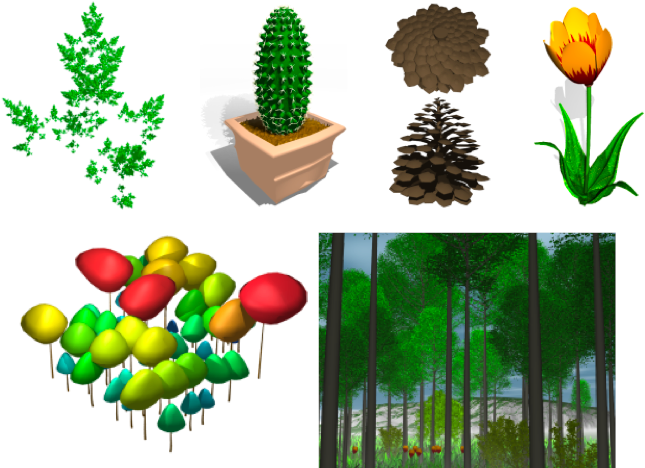PlantGL
Purpose
PlantGL is an open-source graphic toolkit for the creation, simulation and analysis of 3D virtual plants.
Several methods are provided to create plant architectures from field measurements or from procedural algorithms. Because they reveal particularly useful in plant design and simulation, special attention has been paid to the definition and use of branching system envelops.
PlantGL is design to be :
- Open source : PlantGL is an open source software and can thus be freely used and extended. Providing a standard graphic toolkit to the plant modeling community, it benefits in return of the tests and improvements of users.
- Portable : PlantGL is available on major operating systems (GNU Linux, Microsoft Windows). It is also compatible with various plant modeling systems (L-studio, AMAP, etc.) and graphic toolkits (Pov-Ray, Vrml, etc.).
- Simple : The intended audience is researchers of the plant modeling community with no knowledge in computer graphics. Researchers could create images to illustrate and explore their results.
- Modular : PlantGL is composed of several independent modules like a geometric library, GUI components and Python wrappers. They can be used alone or combined in a specific application.
- Hybrid System : Core computational components of PlantGL are implemented in the C++ compiled language for performance. In addition for flexibility of use, these components are also exported in the Python interpreted language.
Try it !
Try the note books <img src="https://mybinder.org/badge_logo.svg" alt="Binder">
Licence
This package is available through Cecill-C license.
Links
- The github project
- The documentation
References
- Pradal C., Boudon F., Nouguier C., Chopard J., Godin C.. 2009. PlantGL : A python-based geometric library for 3D plant modelling at different scales. Graphical Models, 71 : p. 1-21.

